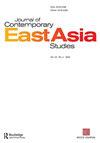China’s offensive in Southeast Asia: regional architecture and the process of Sinicization
IF 1.4
Q1 AREA STUDIES
引用次数: 11
Abstract
ABSTRACT During the 1990s, China had aimed at constructing good relations with neighboring countries including ASEAN members. After the start of external offensive strategy in 2001, China began to accelerate its economic involvement in Asian countries in general, and ASEAN countries in particular. At the same time, China has attempted to create China-led institutional framework and to make the region suitable to Chinese existence. This activity is called “the process of Sinicization” in this article. To explore the process of Sinicization in reference to China’s relations with CLMV (Cambodia, Laos, Myanmar, Vietnam) and Thailand, or China’s relations with ASEAN members, the author examines in detail two cases of the Greater Mekong Subregion Scheme or GMS (since 1992) and the Nanning-based China-ASEAN EXPO or CAEXPO (since 2004) in addition to comparison of Chinese and Japanese economic involvement in Southeast Asia. Through these case studies, the author will clarify the fact that both GMS and CAEXPO become strategic institutions/organizations for not only the promotion of regional cooperation but also the creation of China-led initiatives, such as various China-ASEAN forums. Furthermore, GMS and CAEXPO have also served as instruments to support economic development of border areas in China. Finally, by reviewing the recent movement of the “One Belt One Road” (OBOR) strategy and Asian Infrastructure Investment Bank or AIIB, the author posits that Chinese external offensive will be modified in the process of the OBOR and AIIB’s adjustment to international circumstances.中国在东南亚的攻势:区域架构与中国化进程
上世纪90年代,中国致力于与包括东盟在内的周边国家建立良好关系。自2001年对外进攻战略启动以来,中国开始加快对亚洲国家特别是东盟国家的经济介入。与此同时,中国试图建立中国主导的制度框架,使该地区适合中国的存在。这一活动在本文中被称为“汉化过程”。为了从中国与CLMV(柬埔寨、老挝、缅甸、越南)和泰国的关系或中国与东盟成员国的关系来探讨中国化的过程,作者详细考察了大湄公河次区域计划(GMS)(1992年以来)和以南宁为基地的中国-东盟博览会(2004年以来)的两个案例,并比较了中国和日本在东南亚的经济参与。通过这些案例研究,作者将澄清这样一个事实,即GMS和CAEXPO都是战略机构/组织,不仅可以促进区域合作,还可以创建中国主导的倡议,例如各种中国-东盟论坛。此外,GMS和中国-东盟博览会也成为支持中国边境地区经济发展的工具。最后,通过回顾“b一带一路”战略和亚洲基础设施投资银行(简称亚投行)近期的动向,作者认为,在b一带一路和亚投行适应国际环境的过程中,中国的对外攻势将有所调整。
本文章由计算机程序翻译,如有差异,请以英文原文为准。
求助全文
约1分钟内获得全文
求助全文
来源期刊

Journal of Contemporary East Asia Studies
Social Sciences-Cultural Studies
CiteScore
2.50
自引率
0.00%
发文量
10
审稿时长
6 weeks
 求助内容:
求助内容: 应助结果提醒方式:
应助结果提醒方式:


